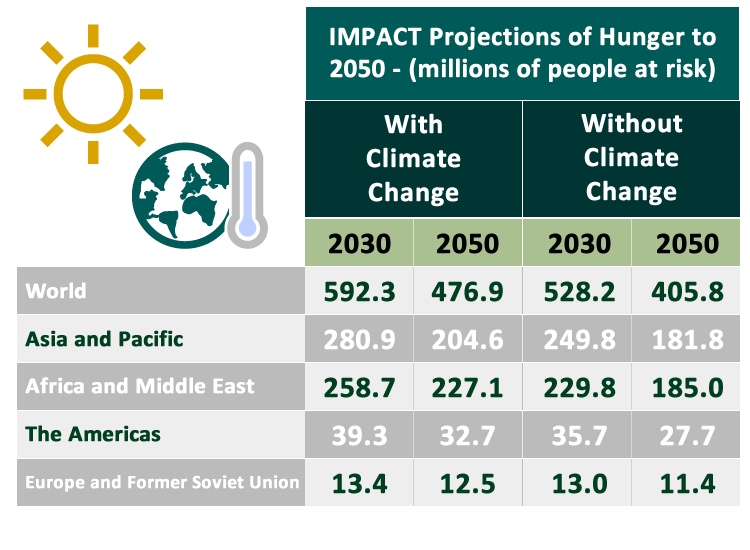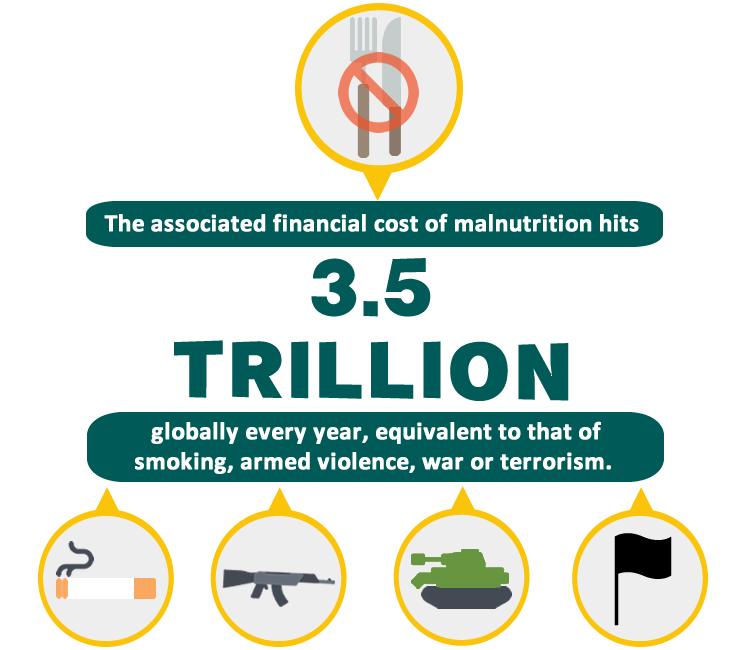We have reached a new triple burden of malnutrition, with one in three people around the world either overweight or undernourished and 795 million living in extreme hunger. Two billion survive on diets that lack the vital nutrients necessary for healthy development and another 1.4 billion suffer from overconsumption of energy-dense food. Global food systems are not only failing to keep us all fed, they are failing to keep us healthy.
At first glance we have made incredible progress in securing our global food supply. The World Bank has reported that the number of people living in extreme hunger fell to 11% of the global population, 19% lower than levels seen in 1990. According to the Food and Agriculture Organization of the United Nations (FAO), this was achieved as increased supply lowered global food prices for the fifth consecutive year in 2016. In the rush to synthetically push up yields and feed our rising populations with cheaper produce, we rarely paused to consider the nutritional vale of our food.
Source: International Model for Policy Analysis of Agricultural Commodities and Trade (2017)
Malnutrition represents the number one risk factor in the global burden of disease. Under-nutrition and hunger levels are declining slowly, especially in Africa where the number of children suffering from stunted growth tops 58 million, but is rising by 500,000 every single year. The developing world could save four million lives per year by 2050 if the consumption of fruits, vegetables and red meat – as well as total calorie availability – is brought in line with recommended levels. At the same time, rates of overweight, obesity and diet-related non-communicable diseases such as diabetes have doubled over the last 35 years. The associated financial cost of malnutrition has been calculated at $3.5 trillion annually, equivalent to that of smoking, armed violence, war or terrorism.
We all know that rising populations and shifting preferences towards more protein-intensive diets mean farmers need to double food calorie production from 2005 levels if we are to sufficiently feed the world in 2050. But why are diets changing? To put it simply – poverty, food insecurity and malnutrition are moving to our cities. Rapid urbanization, particularly in developing countries, has become a critical trend that will shape the future of global food security and nutrition. Urban consumers are more likely to consume imbalanced diets heavy on processed foods that are high in calories, saturated fats, refined sugars and salt, but low levels of fiber and micronutrients, such as iron and zinc. Unfortunately, these nutrient-poor foods are often the most affordable.
Source: International Food Policy Research Institute (2017)
.
Modern diets have been shaped by factors such as the availability and aggressive marketing of energy-rich and nutrient-poor processed foods and fast-food outlets. Fortunately this trend is changing as consumers demand healthier and more nutritious food. Multinational food producers, including Walmart, Dole, Smuckers and PepsiCo, altered 179,600 products to reduce the level of ingredients such as salt, sugar and saturated fat in 2016, up from 84,000 reformulations in 2015. Whole grains and vitamins were also increased by 25% to boost the nutritional profile of food across the sector.
Agriculture and food systems must deliver much more than food – they need to fulfill their potential to underpin the health and wellbeing of our populations. The time for pushing up yields to save the world from starvation is over. We must now begin to provide nourishing food for the world that can be sustained both environmentally, economically, and for mankind’s health and survival. How is this possible? By switching to sustainable agricultural systems, like neem-based natural pesticides and fertilizers, that not only nourish our bodies with healthy, organic food, but that nourish the soil, plants, environment, and animals with healthy, non-toxic, natural ingredients. When mankind lives harmoniously with nature, everyone and everything benefits and stays healthy.


